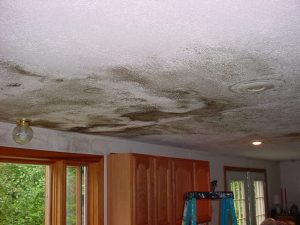Cleaning Your Gutters
Cleaning Your Gutters – A Guide
Severe weather events—from flash flooding and large hail to heavy rainfall—are becoming increasingly common across New Zealand and Australia. The damage from these storms can be widespread and costly. One of the simplest and most vital steps you can take to prevent expensive water damage is ensuring your gutters are cleaned regularly. A blocked gutter system simply cannot handle the extreme water load delivered by a major storm.
In this blog, you’ll learn:
- Why consistent maintenance is the key to preventing major damage.
- The most common reasons why gutters overflow.
- How to safely and effectively clear clogs by hand or with a power washer.
- Valuable long-term investments like gutter guards.
Part 1: Why Clean Gutters are Critical
Prevention and maintenance can abolish most common causes of clogged and overflowing gutters. Consistent cleaning, as well as regular trimming of trees that overhang your roof, are critical steps in protecting your home’s structure.
The Dangers of Neglect
Gutter cleaning is an imperative part of home maintenance. If you don’t keep your gutters clean, they will soon pile up with leaves and other debris that prevent water from appropriately draining from your roof. This leads to a chain reaction of problems:
- Rotted Wood and Fascia:
Overflowing water constantly drenches the wooden eaves and fascia boards, leading to rot and structural failure.
- Foundation Damage
Water pooling near the foundation can cause settlement issues and even basement flooding.
- Pest Infestations
Gutters filled with damp organic debris are an ideal home for nesting rodents, mosquitoes, and insects.
- Sagging Gutters
The sheer weight of debris, standing water, and mud can cause the gutters to bend, pull away from the roofline, and eventually collapse.
It is generally a good idea to clean out your gutters a minimum of twice a year, typically once in late autumn after leaf fall and again in late spring to prepare for summer downpours.
Common Causes of Overflowing Gutters
There could be any number of reasons why your gutters are overflowing, even after a recent storm.
Physical Blockages
The most obvious cause is the accumulation of leaves, nuts, and sticks.
Incorrect Slope
The angle of your gutters to the downpipes may not be steep enough to allow the water to move freely. If water pools rather than drains, you will need to reposition the gutters slightly higher at the end furthest away from the downpipe.
Clogged Downpipes
Debris can often bypass the gutter and cause a clog lower down in the downpipe itself.
- Inadequate System – In the case of older or recently-renovated properties, the roof drainage system may simply not have enough downpipes to handle the roof size and the high volume of water typical in modern severe storms.
Addressing Existing Water Damage
The water may have already caused some damage by the time you notice you have a problem, especially if it has flooded under the roof. The first thing to do when you notice a congested gutter is to check the roof and ceilings nearby for any signs of water damage. This can be costly and difficult to repair if it travels too far. If the water has not entered the roof, you can often fix your overflowing gutters quickly and easily.
Under-engineered Drainage
An overworked roof drainage system, commonly caused by an inadequate number of downpipes for the roof size, can be amended by adding more downpipes. You might want to consult a professional if you go down this road, as they will assist you in calculating important factors such as slope, load, and positioning.
Part 2: How to Clean and Protect Your System
Cleaning Your Gutters Safely
Since working at height is inherently dangerous, proper safety precautions must be taken. Never work on a ladder alone.
- Pull out Debris by Hand
If power washing is not an option or you have too much clutter, you will need to pull out the debris by hand. It is sensible to wear thick work gloves or rubber gloves to protect yourself from sharp objects, mould, and harmful insects. Put all the debris you pull out into a green waste bin so you do not have to clean it up from the ground later.
- Rinse the Gutters with a Hose
Once the bulk of the debris is out, you should be able to wash the remaining residue out with a hose.
- Check Flow
Watch how the water flows once you start rinsing. It should come out of the downpipe freely. If not, you may have to use a small brush on a wire or a plumbing snake to push out any remaining debris clogging the system.
- Check Pooling
Rinsing your gutters will also let you see if there are any areas where the water may pool up rather than drain. If you see persistent pooling, you may need to replace or re-slope that section of your guttering, as pooling will cause premature wear and corrosion.
- Power Wash If Appropriate
If your gutters are still in good shape structurally, you may be able to power wash them for cleaning. This involves using a high-pressure washer, also known as a gurney. Power washing saves you from having to pull out debris by hand, but it is not wise to try on older gutters that are weak or bent. The pressure from the water may cause the gutters to fall if they are not securely fastened.
- Avoid Clogging
If you choose to power wash, circumvent forcing all the debris down the downpipe. Instead, try to push it over the edge of the gutters and onto the ground for you to rake up later. A cluttered downpipe can be a giant headache to mess with.
Long-Term Protection: Gutter Guards
Gutter guards are essential caps that go over your gutters to minimise debris clogging. They are a valuable investment, particularly in heavily treed areas.
- Function
These guards feature slight slits, meshes, or holes that let water pass through while stopping leaves, nuts, branches, and other nuisances from piling up in your guttering.
- Recommendation
If you have a relatively new guttering system or plan on installing new gutters in the future, go the extra mile and invest in a quality gutter guard system for your home. This will minimise the work you have to do later on.
Professional Gutter Cleaning Services
Gutter cleaning is a dirty, dangerous job that involves heights and heavy lifting. We all know someone who has taken a nasty fall off a ladder with severe consequences. Do not risk your safety.
If you want the job done properly, safely, and efficiently, the Jim’s Mowing team is here to help. Our professionals have the right equipment and experience to clear your gutters without risk to you or your home.
Conclusion
Regular gutter maintenance is one of the cheapest and most effective forms of home insurance you can invest in. By ensuring your system is clean, properly sloped, and free of blockages, you protect your roof, fascia, and foundation from costly storm damage. Remember the key steps: clean twice a year, check the flow, and install protection where needed.
Don’t hesitate to call Jim’s Mowing on 0800 454 654 or book online and we’ll happily clean the gutters for you!


